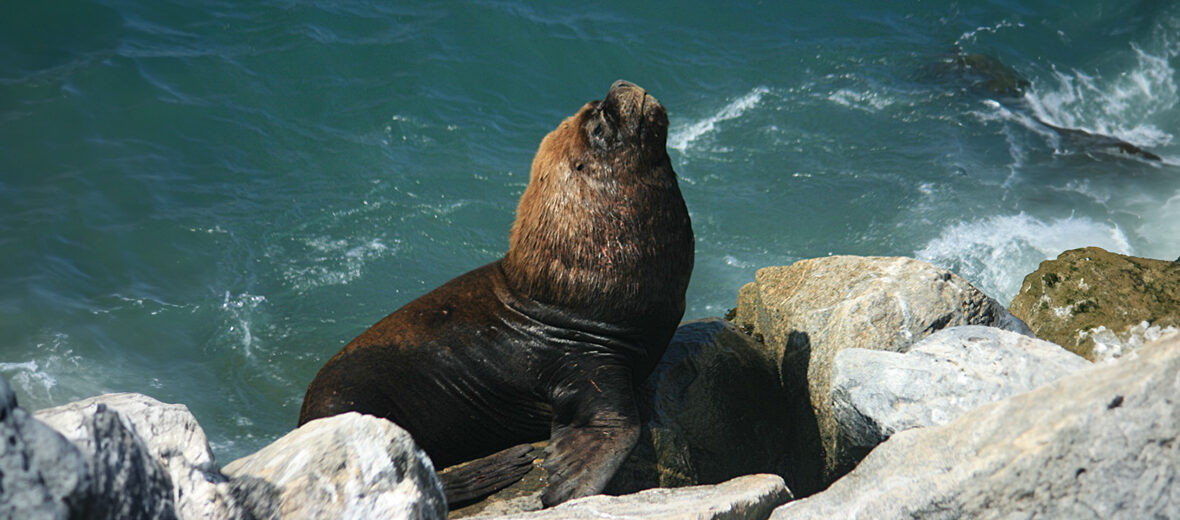
The South American sea lion, aka southern sea lion or the Patagonian sea lion, can be found along much of the South American Coastline, from the west coast, to the east coast. They are threatened by overfishing and over harvesting of their food source, as well as by water pollution at the hands of the agricultural industry and trash being dumped into the water (which can result in plastic consumption). However, these sea lions are abundant and listed as Least Concern by the IUCN.
First the Stats…
Scientific name: Otaria byronia
Weight: Up to 770 lbs.
Length: Up to 9.8 feet
Lifespan: Up to 20 years
Now on to the Facts!
1.) There were an estimated 222,500 wild individuals as of 2015.
2.) They, like other sea lions, are highly sexually dimorphic, in that males are substantially larger than females by several hundred pounds.
3.) Various fish, octopuses, and squids make up their diet. However, they have also been documented preying on pelicans, penguins, and juvenile sea lions.
4.) These critters were classified as Otaria flavescens by George Shaw back in 1800 and as Otaria byronia by Henri Marie Ducrotay de Blainville in 1820. However, Otaria flavescens has become the overall preferred name.
5.) The South American sea lion is listed among the largest of the eared seals.
But wait, there’s more on the South American sea lion!
6.) Males are territorial and also maintain harems.
7.) South American sea lions typically breed on beaches rich with sand, gravel, pebbles, or rocks. They can also be found on flat, rocky cliffs that house tidepools.
Did you know…?
These sea lions also have 2 other local names: león marino, which translates to sea lion, and lobo marino, which translates to sea wolf.
8.) Females undergo up to an 11.75 month gestation (pregnancy) that yields a single pup.
9.) Pups are born with a black coat, however they turn reddish-brown after their first molt.
10.) Orcas and sharks prey on these sea lions.
But wait, there’s still more on the South American sea lion!
11.) Males typically keep watch over up to 3 females in their harem, but some have up to 15.
12.) During the breeding season, the males that fail to acquire territories and subsequent harems, typically subadults, will often partake in group raids in an attempt to change the status quo and gain access to females.
Did you know…?
The Moche people from ancient Peru worshipped the sea as well as its animals. They often depicted South American sea lions in their artwork.
13.) Raids can cause mass chaos in the breeding harems, and often separate mothers from their pups.
14.) Unfortunately, pups are often killed or severely injured during these raids.
15.) Nursing females remain with their newborn pups for up to a week before making a 3-day trek out to sea to forage for food and then return to nurse their pup.
Now a Short South American Sea Lion Video!
Be sure to share & comment below! Also, check out the Critter Science YouTube channel. Videos added regularly!
Want to suggest a critter for me to write about? Let me know here.
Some source material acquired from: Wikipedia & IUCN
Photo credit: iNaturalist




